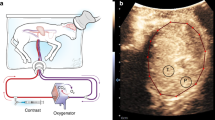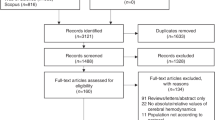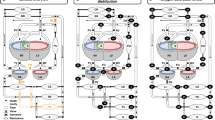Abstract
Congenital hypoplasia of left heart structures in fetuses frequently progresses with gestational development. Interference with cerebral development is common in these fetuses. Chronic maternal hyperoxygenation (MHO) has been recommended to increase left ventricular size and to limit cerebral damage. The effects of MHO on cerebral blood flow and metabolism have been studied in normal fetuses and fetuses with left heart hypoplasia. Maternal hyperoxygenation increases fetal pulmonary blood flow. This is associated with reduction of foramen ovale flow, thus limiting the increase in left ventricular output. Modest increase in the size of left heart structures has been reported, but in another study, no significant improvement occurred. In sheep fetuses increased oxygenation results in marked reduction of cerebral blood flow, with no change in oxygen delivery or consumption by the brain, but significant reduction in cerebral glucose delivery and consumption. In one study of fetuses with left heart hypoplasia, chronic MHO was associated with decrease in head size. The effectiveness of MHO in improving left ventricular development is controversial. MHO is, however, associated with reduction of cerebral blood flow and possible interference with cerebral development. In view of this it is recommended that all studies of chronic maternal hyperoxygenation be curtailed.
Similar content being viewed by others
Log in or create a free account to read this content
Gain free access to this article, as well as selected content from this journal and more on nature.com
or
References
Ramanathan, S., Gandhi, S., Arismendy, J., Chalon, J. & Turndorf, H. Oxygen transfer from mother to fetus during epidural anesthesia. Anesth. Analg. 61, 576–581 (1982).
Cohn, H. E., Sacks, E. J., Heymann, M. A. & Rudolph, A. M. Cardiovascular responses to hypoxemia and acidemia in fetal lambs. Am. J. Obstet. Gynecol. 120, 817–824 (1974).
Bsburamani, A. A., Ek, C. J., Walker, D. W. & Castillo-Melendez, M. Vulnerability of the developing brain to hypoxic-ischemic damage: contribution of the cerebral vasculature to injury and repair?. Front. Physiol. 3, 424 (2012).
Fishman, N. H., Hof, R. B., Rudolph, A. M. & Heymann, M. A. Models of congenital heart disease in fetal lambs. Circulation 58, 354–364 (1975).
Yamamoto, Y. & Hornberger, L. K. Progression of outflow tract obstruction in the fetus. Early Hum. Dev. 88, 279–285 (2012).
Kohl, T. Chronic intermittent materno-fetal hyperoxygenation in late gestation may improve on hypoplastic vascular structures associated with cardiac malformations in human fetuses. Pediatr. Cardiol. 31, 250–263 (2010).
Lewis, A. B., Heymann, M. A. & Rudolph, A. M. Gestational changes in pulmonary vascular responses in fetal lambs in utero. Circ. Res. 39, 536–541 (1976).
Heymann, M. A., Rudolph, A. M. & Melmon, K. L. Bradykinin production associated with oxygenation of the fetal lamb. Circ. Res. 25, 521–534 (1969).
Rasanen, J. et al. Reactivity of the human fetal pulmonarycirculation to maternal hyperoxygenation increases during the second half of pregnancy: a randomized study. Circulation 97, 257–262 (1998).
Prsa, M. et al. Reference ranges of blood flow in the major vessels of the normal human fetal circulation at term by phase-contrast magnetic resonance imaging. Circ. Cardiovasc. Imaging 7, 663–670 (2014).
Borik, S., Macgowan, C. K. & Seed, M. Maternal hyperoxygenation and foetal cardiac MRI in the assessment of the borderline left ventricle. Cardiol. Young 25, 1214–1217 (2015).
Lara, D. A. et al. Pilot study of chronic maternal hyperoxygenation and effect on aortic and mitral valve annular dimensions in fetuses with left heart hypoplasia. Ultrasound Obstet. Gynecol. 48, 365–372 (2016).
Zeng, S. et al. Sustained maternal hyperoxygenation improves aortic arch dimensions in fetuses with coarctation. Sci. Rep. 16, 39304 (2016).
Watson, N. A., Beards, S. C., Allaf, N., Kassner, A. & Jackson, A. The effect of hyperoxia on cerebral blood flow: a study in healthy volunteers using magnetic resonance phase-contrast angiography. Eur. J. Anaesthesiol. 17, 132–139 (2000).
Sorensen, A. et al. Changes in fetal oxygenation during maternal hyperoxia as estimated by BOLD MRI. Prenat. Diagn. 33, 141–145 (2013).
Almstrom, H. & Sonesson, S. E. Doppler echo-cardiographic assessment of fetal blood flow distribution during maternal hyperoxygenation. Ultrasound Obstet. Gynecol. 8, 256–261 (1996).
Iwamoto, H. S., Teitel, D. F. & Rudolph, A. M. Effect of birth-related events on metabolism in fetal sheep. Pediatr. Res. 30, 158–164 (1991).
Szwast, A., Putt, M., Gaynor, J. W., Licht, D. J. & Rychik, J. Cerebrovascular response to maternal hyperoxygenation in fetuses with hypoplastic left heart syndrome depends on gestational age and baseline cerebrovascular resistance. Ultrasound Obstet. Gynecol. 52, 473–478 (2018).
Edwards, L. A. et al. Chronic maternal hyperoxygenation and effect on cerebral and placental vasoregulation and neurodevelopment in fetuses with left heart hypoplasia. Fetal Diagn. Ther. 46, 45−57 (2019).
Ishii, R. et al. Effects of maternal hyoeroxygenation in a case of severe congenital diaphragmatic hernia accompanied by hydrops fetalis. J. Ped Surg. 2, 15–19 (2014).
Limperopoulos, C. et al. Neurologic status of newborns with congenital heart defects before open heart surgery. Pediatrics 103, 402–408 (1999).
Sun, L. et al. Reduced fetal cerebral oxygen consumption is associated with smaller brain size in fetuses with congenital heart disease. Circulation 131, 1313–1323 (2015).
Rudolph, A. M. Impaired cerebral development in fetuses with congenital cardiovascular malformations: is it the result of inadequate glucose supply? Pediatr. Res. 80, 172–177 (2016).
Author information
Authors and Affiliations
Corresponding author
Ethics declarations
Competing interests
The author declares no competing interests.
Additional information
Publisher’s note Springer Nature remains neutral with regard to jurisdictional claims in published maps and institutional affiliations.
Rights and permissions
About this article
Cite this article
Rudolph, A.M. Maternal hyperoxygenation for the human fetus: should studies be curtailed?. Pediatr Res 87, 630–633 (2020). https://doi.org/10.1038/s41390-019-0604-4
Received:
Revised:
Accepted:
Published:
Issue date:
DOI: https://doi.org/10.1038/s41390-019-0604-4
This article is cited by
-
Development of a personalized fluid-structure interaction model for the aorta in human fetuses
Engineering with Computers (2025)
-
Hypoplastic left heart syndrome: current modalities of treatment and outcomes
Indian Journal of Thoracic and Cardiovascular Surgery (2021)



